We started Cool Mom Picks shortly after Etsy launched, and we’ve been big fans ever since, discovering and happily sharing some of the coolest indie artisans and their handmade goods here on our site for nearly ten years now. So as huge supporters of the handmade movement and indie artist in general, it’s probably no surprise that our interest was piqued when Handmade at Amazon launched last week.
So, we took a closer look to understand what it’s all about, and whether we think it’s something you’ll want to have on your radar, as a consumer, and for those of you artisans, as a seller.
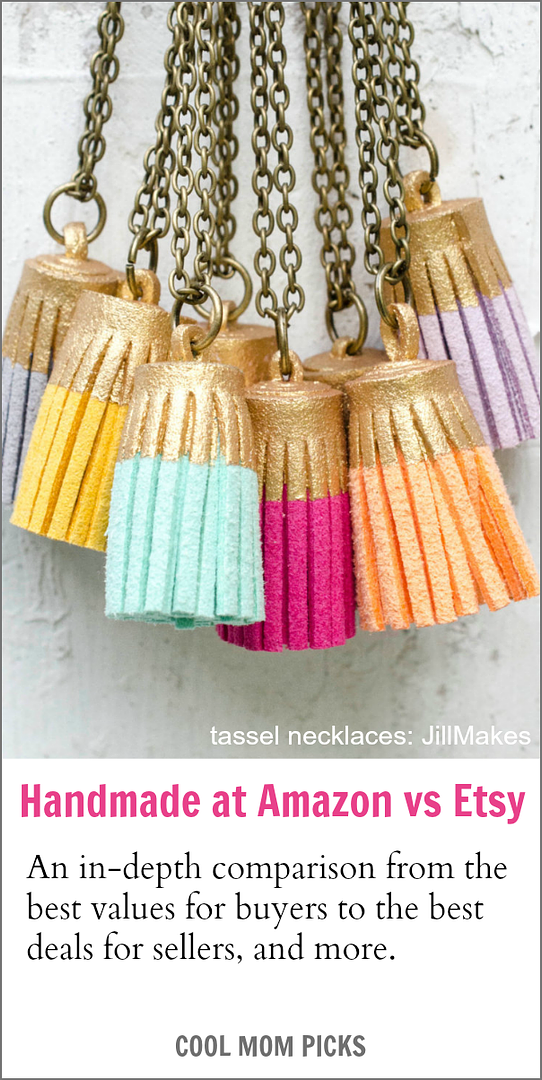
How Handmade at Amazon Works
Over the past year, there have been lots of changes on Etsy for both shoppers and sellers, so it’s really not shocking that Amazon would attempt to move into the space. Not surprisingly, Handmade at Amazon functions very similarly to Etsy, except that they’re being extremely selective when it comes to seller applications, apparently vetting for truly handmade items.
That means, sellers must give detailed descriptions of their manufacturing process, which cannot include any outsourcing. That’s a plus for real handmade artists…not so good for people outsourcing lunch boxes and candle holders from China to resell.
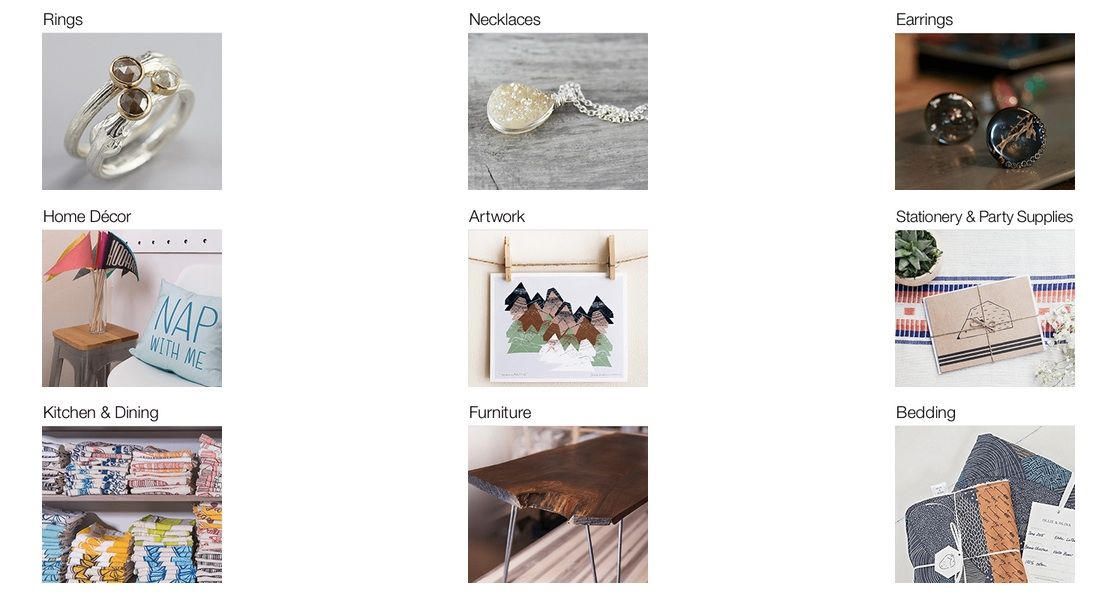
You can shop by each of six categories for now: Home, Jewelry, Artwork, Stationery and Party Supplies, Kitchen and Dining and Baby.
Click on the category and use the sidebar to refine your search down based on your preferences. Once you find an item you like, you can add it to your cart or your wish list, with the shipping amount clearly marked.
Once a seller is accepted, they set up their storefront, which admittedly looks pretty bleak, just items and prices, no header or welcome or anything very warm and friendly. Once you click on something you like, you’ll get the above screen, at which point you are able to access their bio, and like Etsy, you can find more information about the artisan, and their process.
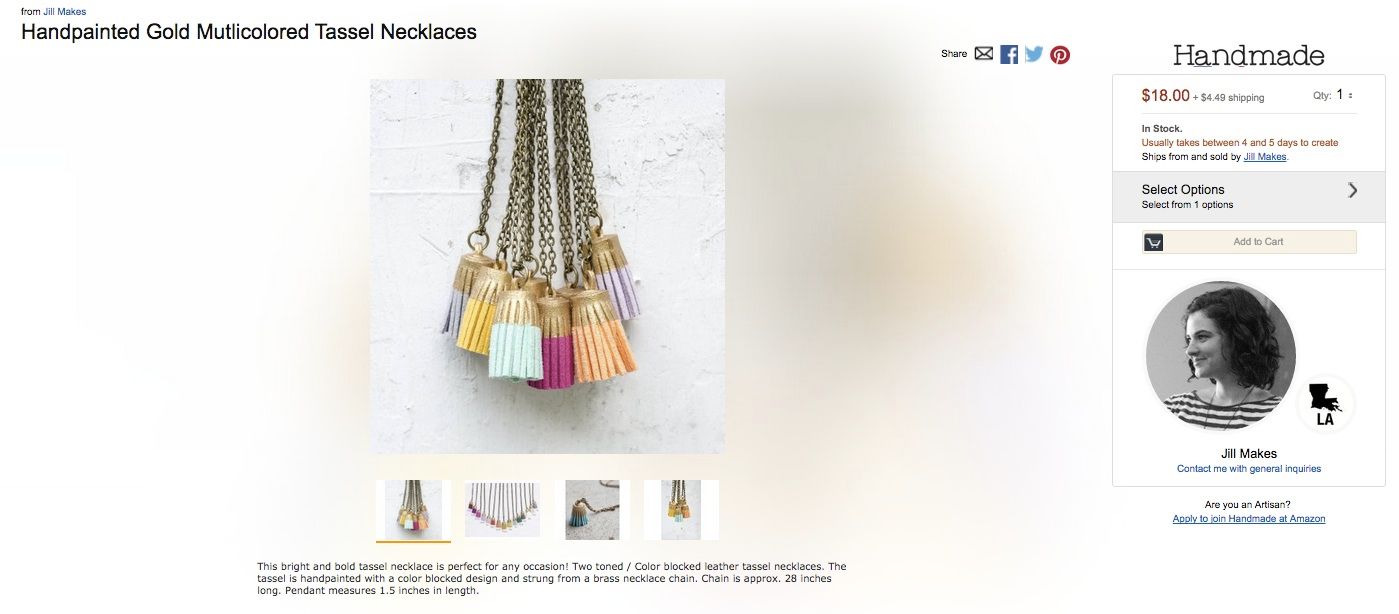
The Jill Makes tassel necklaces on Handmade at Amazon
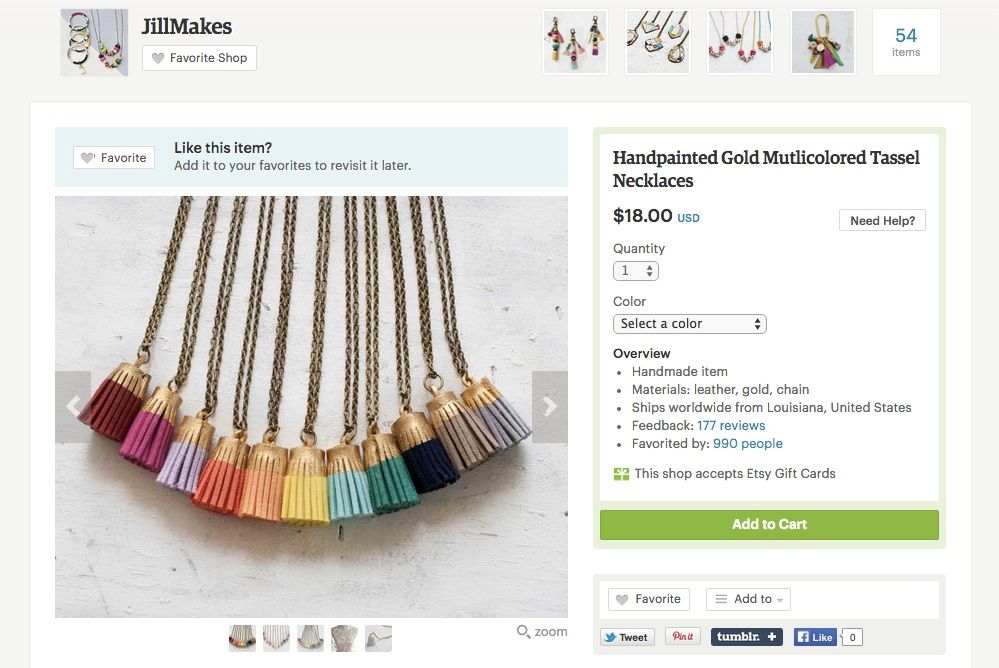
The JillMakes tassel necklaces on Etsy
Now while I didn’t actually order anything, I completed every step up until that point. I find that it’s pretty similar to placing any other order from Amazon; you are prompted to login, then choose your address, payment method, and finally shipping.
What Sellers Should Know About Handmade at Amazon
Commission Structure
Getting items listed on Amazon means a whole lot more potential eyeballs — like over 280 million pairs of them — plus the possibility to have items shipped from Amazon fulfillment centers, which is especially cool for Amazon Prime members who want their items fast and free.
However, the cost is much higher for sellers here than on Etsy, with Amazon taking a straight 12% commission off each item sold (or $.50, whichever is higher), plus $39.99 for a professional seller account (though apparently that’s being waived until next year). Compare that with the $.20 per item listing fee and the 3.5% commission Etsy takes.
12% commission vs 3.5% commission: Big difference
Search
Also, there are definitely some kinks when it comes to finding the sellers. I clicked on a couple of links, like “More from xx shop” where it should have gone taken me to the seller’s storefront but instead, took me to a main Amazon search with everything containing that seller’s name — not necessarily just that artisan’s products. Oops. In the same vein, searching by artisan or even by the item doesn’t yet yield great results. So you’ll have to know what you’re looking for to find it at this point.
While I have no doubt Google’s search engine will catch up, right now if you search the shop name and “Handmade at Amazon,” nothing really comes up; conversely, you can search the shop name and “Etsy,” and boom, there it is.
Community
But I think the most important difference for sellers is the level of community and camaraderie that Etsy fosters amongs their artisans. Over the years, they’ve been at the forefront of the handmade movement, giving a forum and voice to so many indie artisans; I’m just not sure Amazon will be able to provide that same environment. But who knows, maybe they’ll surprise me.
What Shoppers Should Know About Handmade at Amazon
There’s certainly a convenience factor to consider with Handmade at Amazon, because if you’re like the millions of people who use Amazon regularly, it’s nice to be able to use your Amazon login to make purchases without having to go to another website. And at least for now, you’ll know that you’re ordering something that is truly handmade (or at least, handmade according Amazon’s definition), as opposed to Etsy where they’ve changed their rules to allow some outsourcing.
User experience
On first glance, Amazon doesn’t have the same friendly feel that you get when you’re perusing Etsy and I think there’s something to be said for that. And as much as they’ve got the artisan’s photography and bio, it’s a much more corporate experience when you’re clicking around, at least in my opinion. One of the wonderful things about Etsy is that you get a sense you’re personally interacting with the artist and Etsy is just a conduit. I didn’t quite get the same feeling when I was perusing Handmade at Amazon.
The photos on Handmade at Amazon are also much smaller, which isn’t necessarily a huge big deal, but it does make a difference when you’re shopping for items like stationery or artwork which require closer inspection.
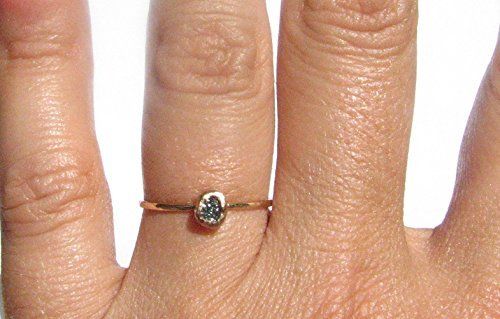
Rough diamond ring from Ringsland: On Etsy = $128 + $7 shipping;
On Handmade at Amazon = $147 + $4.49 shipping
Comparing prices
As far as pricing goes, I have found that it really varies by artisan.
For a few artisans, the cost of the item and the shipping on Amazon comes out exactly the same or close to what it is on Etsy. But in several other cases, I found that the item was significantly cheaper on Etsy, though with slightly higher shipping. However, the total net purchase price was still much more cost-effective on Etsy as compared to Handmade at Amazon.
I can’t say I’m surprised, considering Amazon is charging the seller a lot more and they need to make up the margins.
Granted, I’m not sure how frequently buyers are going to be cross-checking the prices. But I’m guessing that like a lot of people, since I’ve already got an Etsy account and ordering through Amazon doesn’t really create a higher level of convenience for me, I’d be more likely to purchase from Etsy and save myself a few dollars…or a lot more.
User Experience
I have to say that I find the Handmade at Amazon storefronts a bit difficult to maneuver through. I couldn’t find shipping policies and rates easily until I clicked on the link under the price of the item, and even then, it was hard to locate. Plus, when I did click, I found that the rates and the policies often didn’t match.
For example, The Ringsland shop policies plage stated it shipped within two days of receiving the order, but in the rate chart, it says to expect 18-32 days until you receive your order . Eep. Now that may be a reasonable amount of time for beautiful made-to-order jewelry, but if the expectation isn’t managed, shoppers will be annoyed.
Our Bottom Line: Handmade at Amazon vs Etsy
Like any new shopping website, I’d certainly be curious to see how the actual ordering process functions, and whether there are any snags or hiccups, both from the shopper and the seller perspectives. Also, I base a lot of what I order on past reviews from shoppers, and there are none yet on Amazon.
I’m also wondering about the return process, and whether my requests and messages are clearly communicated to the seller, a process that’s very clear and well-established with Etsy.
Also, I definitely want to be sure that I’m really supporting the artisan and not somehow paying too much for my own convenience. Sure, it’s nice to be able to shop in one place, but if it’s really costing a mall maker, I don’t know if I’d feel as comfortable moving away from Etsy.
But hey, if Handmade at Amazon allows artisans to reach more potential shoppers, and get handmade goods in the hands of the masses, then it’s certainly worth a look. Maybe more sales will even help cut Amazon’s own commission and cut retail prices down to what they are on Etsy.
Here’s hoping that’s exactly what happens. We’ll be keeping an eye on it.
Head over to Handmade at Amazon to see for yourself. And we’d love to know what you think about it. Feel free to leave us a comment with your thoughts.
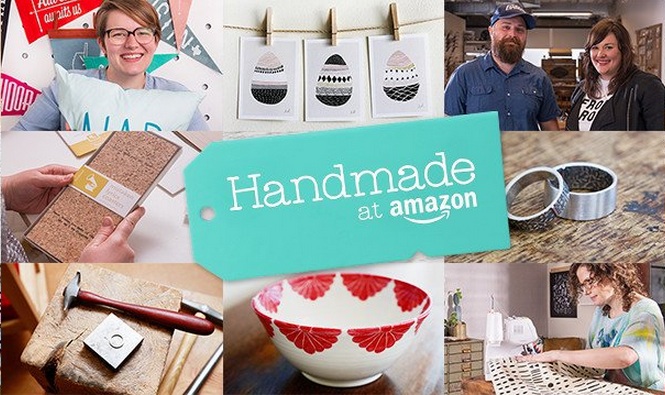




As a buyer, I like that Amazon seems to do a better job of vetting sellers. When shopping on Etsy, it’s sometimes tricky to tell what’s actually handmade.
Bad deal for craftspeople. The fine print leads me to believe that once you list with amazon, they own your design, and can even have your design mass reproduced. It says nothing about paying you for the use of your creation. Copyright things before listing them. (I hope Amazon is not above copyright law)
NPR recently had a speaker that talked about how songwriters and other people are not being compensated fairly for their creations anymore. The computer realm may connect artists with their audience, but the artist pays dearly.
Thanks for the additional analysis Marva, wow. Started poking around and found this blog post from a (former) handmade seller which is pretty incredible.
https://www.creationsfromthehart.com/amazon-review/
It describes rules like the seller on Amazon paying 20% of the return fees from buyers, and not being allowed to communicate with buyers directly. Also, as you state here’s the license agreement:
License: You grant us a royalty-free, non-exclusive, worldwide, perpetual, irrevocable right and license to use, reproduce, perform, display, distribute, adapt, modify, re-format, create derivative works of, and otherwise commercially or non-commercially exploit in any manner, any and all of Your Materials, and to sublicense the foregoing rights to our Affiliates and operators of Amazon Associated Properties.
Good stuff for makers to know.
I was hoping that Amazon Handmade would firmly hold the line on items being 100% handmade, but a quick perusal the other day revealed several sellers selling mass-produced mugs with their own decals on them. The decals may be designed by the seller, but I don’t see how putting them on a factory made mug makes it a handmade item. It brings back the problem of “what is handmade” that Etsy has such a hard time grappling with. If someone buys a factory-made scarf and sews an embellishment on it, does that make it a handmade item? To my mind, it doesn’t, and I wish Amazon would be very clear about what their standard is and stick to it.
I agree totally! I have a hand painted mug business on Etsy. It’s hard to compete with mass produced mugs and people stealing your original work to boot. Truly frustrating : ( Thanks for posting exactly what I’ve been thinking : )
Thanks for your review – I think that Etsy is definitely my go-to for handmade but I do like that Amazon clearly marks the shipping cost, and is more rigorous with ensuring their sellers are truly handmade. I hope it encourages Etsy to correct some issues they’ve had, and continue the services that are going well. 🙂
Just a head’s up-pricing on Amazon is supposed to be the same or less than your other selling venues according to Amazon terms of service. Seller’s that don’t adhere to that will have a short lived time on the platform.
Also: people are freaked out about the 12% but I am not. Why? It also includes all your fees for credit card processing for one thing. I pay more than 12% to those I have a consignment relationship with so I don’t see the problem, so long as you are pricing your items properly. If you cannot absorb 12% you are probably pricing far too low. I sell wholesale and retail and add in a small buffer for situations where a buyer is purchasing large quantities. That buffer is also helpful in a situation like this.
Enjoyed your comparison! Just want to chime in on two things.
First, as pointed out by Dawn Hill, above: it is definitely not permitted for Amazon sellers to have an identical item on any other platform at a lower price.
And second, while the Terms of Use are indeed daunting to wade through, I do believe that the term “all of Your Materials” applies to “materials” on their site: i.e., photographs, artist’s statement, etc. In other words, they can lift from your store if it suits them to use it to promote the site. There has been a major, and false, alarm about how Amazon is going to copy all the artisan’s original work and sell it themselves. Would be interesting to find a crafting lawyer (or a crafty lawyer!) to weigh in on this.
Thanks!